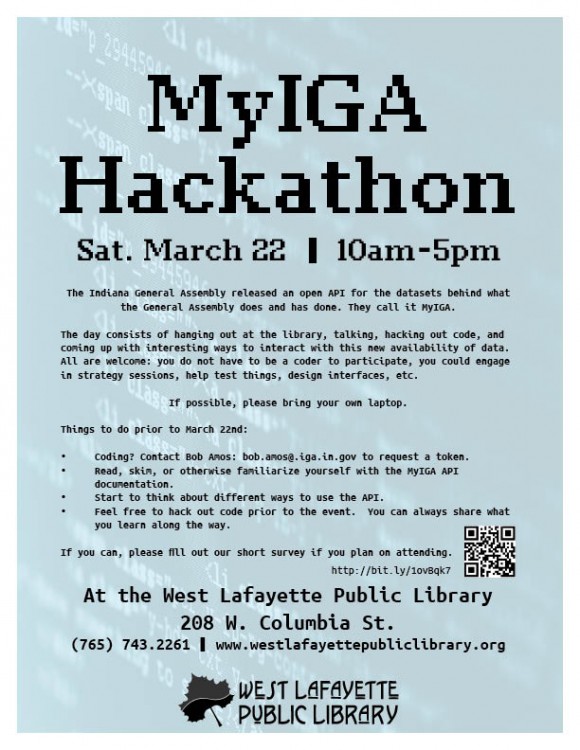As of late, I have been involved in a multitude of planning meetings. The most recent has been the State Street Master Plan.
The US 231 bypass was finalized in 2013. This allowed the City of West Lafayette to gain control of State St. (State Road 26) from the bridge at Tapawingo until the connection with the new bypass/corridor a little past the Purdue Airport.
From the INDOT website:
This $45.6 million Major Moves project will relocate US 231. The US 231 Bypass will begin just north of the Wabash River and continue east of the Purdue University Airport, then northwest to State Road 26 near its intersection with Newman Road. The bypass will connect with US 52 just west of McCormick Road. Construction began in the spring of 2011. The 5.3 miles of US 231 is scheduled to be open to traffic by the middle of September 2013.
While gaining control over this important roadway, the City can now make changes to its look and feel, transportation options, signal timing, etc. It was announced at a City Council meeting that a State Street Master Plan (contracted with MKSK’s Indy office) would be created and completed within 11 or so months. An incredibly quick turnaround for such an important piece of transportation infrastructure.
Post this announcement, City officials admitted that the Chauncey Village area should be considered and declared the Downtown for the City. Talks of moving City Hall to Morton Community Center were already in the works. Recent mold and leak issues at City Hall accelerated this interest and placed the Department of Development inside the community center as of today.
Thankfully, I was included in two groups for the State Street Master Plan: the Residential Stakeholders Group and the Project Working Group. Both were interesting and informative on a variety of fronts. I sat alongside many of important and familiar faces from our community. Fellow cyclists, business owners, Purdue employees, Purdue Research Foundation employees, residents, parents, students, etc. We spent the meetings discussing the possibilities that could be achieved along State Street. A wonderful opportunity that I am very grateful for being a part of.
After some surveys and Public Meetings (the 3rd and final being on March 13th), the plan has taken shape as a transportation plan for the area with some nods towards possible community gathering spaces (stages, outdoor seating, boulevard parks, etc).
At the March 3rd City Council meeting, I spoke out against the PDMX request for the 225 Northwestern Bar Barry Liquor’s site and instead, spoke in favor of encouraging development within the already designated CBW zoning. Tippecanoe County Unified Zoning Ordinance states that, among lots of other information, CBW buildings can only be 3 stories tall. This would keep them inline with the neighboring mixed use structure (Einstein’s) and West Lafayette Public Library across the street.
I also encouraged the Council to look towards the New Chauncey Neighborhood Land Use Plan that was recently adopted by the City for inspiration. In this document, the APC, City, and Neighborhood worked on a multitude of components: histories, maps of tree locations, goals, strategies, zoning, rental and owner-occupied maps, etc. In short, a very powerful piece of Civic literature. This type of document is critical to helping make the Downtown area we all dream to have.
It was a good discussion. The Council debated the PDMX request for an hour or so. In the end, the council voted 5 – 2 in favor of the request. 5-story PDMX requests seem to be the new norm for the Village area.
I also made the request to create and adopt a land use plan, with corresponding overlays, into the State Street Master Plan. Hopefully stymieing the continual piecemeal, patchwork of planned development requests (another being 720 Northwestern by Campus Acquisitions) going before the Council month after month (not to mention the drain on the APC).
At our last Stakeholders Group and Project Working Group meeting, an overlay plan component was briefly presented. MKSK referenced the Columbus Ohio and their Commercial Corridor District. I have yet to digest the full document, but it seems interesting.
Further research has yielded that Fishers Indiana has also recently completed a similar plan, Nickel Plate District Code, for their City. I was told that this is the first of its kind in Indiana.
Hopefully, West Lafayette can become the next to create such a plan for its tentative downtown corridor along State Street. We have a lot of work ahead of us. Get involved. Stay informed. And be engaged.
If you want to help with any of this or other civic projects, please drop me a line. I am always looking for other people to collaborate with.
(I will probably update this post with more information and correct typos. More questions will arise, I’m sure. The updates will be noted as such.)
Rushed Update:
720 Northwestern (or as it is called FUSE) is shaping up. Here are some quick links:
FUSE Purdue.com
FUSE Facebook
Hotpads listing
